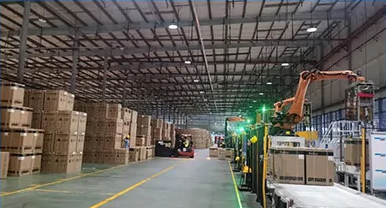The Benefits and Applications of Self-Amalgamating Rubber
Self-amalgamating rubber, known for its exceptional sealing properties and ease of use, has revolutionized various industries by providing reliable solutions for numerous applications. This innovative material stands out due to its unique ability to bond to itself without the need for adhesives or additional materials. Once the rubber is applied, it forms a seamless and watertight seal that can withstand a range of environmental conditions. In this article, we will explore the benefits, applications, and future potential of self-amalgamating rubber.
Understanding Self-Amalgamation
Self-amalgamation refers to the process by which certain types of rubber can fuse together upon contact. This characteristic is particularly valuable in situations where traditional adhesive methods might fail or when precise alignment is difficult. The rubber typically comes in the form of a tape or sheet that can be wrapped around pipes, wires, and other substrates. When stretched and pressed together, the surfaces bond into a homogenous mass that retains flexibility while offering superior protection against moisture, dust, and other corrosive elements.
Key Benefits
1. Ease of Use One of the most significant advantages of self-amalgamating rubber is its simplicity. It can be applied without the need for specialized tools or training. Users can easily tear off the desired length and wrap it around the intended surface. The lack of curing time means that it can be used in emergency repairs without waiting for additional substances to set.
2. Versatility Self-amalgamating rubber is highly versatile, suitable for various applications across multiple industries. Whether in electrical insulation, plumbing, automotive, or telecommunications, its ability to conform to irregular shapes makes it an ideal choice.
3. Weather Resistance This material exhibits remarkable resistance to heat, cold, and UV radiation, making it suitable for outdoor applications where traditional materials may degrade over time. It maintains its integrity under extreme conditions, ensuring long-lasting performance.
self amalgamating rubber

4. Electrical Insulation In electrical applications, self-amalgamating rubber provides excellent insulation properties. It can be used to repair damaged cables, splice wires, or protect connections from moisture and contaminants, reducing the risk of short circuits or electrical failures.
5. Environmental Stability Unlike many traditional sealing materials, self-amalgamating rubber does not shrink or harden over time. It maintains flexibility, which is essential for applications subjected to movement or vibration.
Applications
The applications for self-amalgamating rubber are vast and varied. In the telecommunications industry, it is commonly used to insulate and protect fiber optic and electrical cables from environmental damage. In plumbing, it has proven invaluable for sealing leaks in pipes and joints, providing a quick and effective solution to prevent water loss.
The automotive sector utilizes self-amalgamating rubber for sealing hoses and connections, helping to improve the longevity of various components. Moreover, it finds use in a range of industrial settings, including factories and warehouses, where machinery and equipment require reliable protective coverings.
The Future of Self-Amalgamating Rubber
As industries continue to evolve, the demand for efficient, cost-effective sealing solutions will likely increase. Innovations in material science are expected to enhance the properties of self-amalgamating rubber, making it even more effective in harsher environments. Additionally, with growing attention on sustainability, future developments may focus on creating eco-friendly versions of self-amalgamating rubber that maintain performance while reducing environmental impact.
In conclusion, self-amalgamating rubber stands out as a practical and versatile solution for sealing, insulating, and protecting various applications across multiple industries. Its ease of use, environmental resistance, and versatility make it an essential material in today’s fast-paced technological landscape. With ongoing advancements, the future of self-amalgamating rubber looks promising, poised to meet the challenges of an evolving market.
-
XIANGFAN Rubber Tape-Ultimate Solutions for All Your Insulation NeedsNewsJun.24,2025
-
XIANGFAN Rubber Tape-Protection for Industrial and Residential ApplicationsNewsJun.24,2025
-
XIANGFAN Rubber Tape: Superior Safety and Sealing for Demanding EnvironmentsNewsJun.24,2025
-
XIANGFAN Rubber Tape: Reliable Solutions for Every Electrical ChallengeNewsJun.24,2025
-
XIANGFAN Electrical & Industrial Tape: Powering Reliability Across IndustriesNewsJun.24,2025
-
XIANGFAN Electrical & Industrial Tape: Excellence in Every ApplicationNewsJun.24,2025
